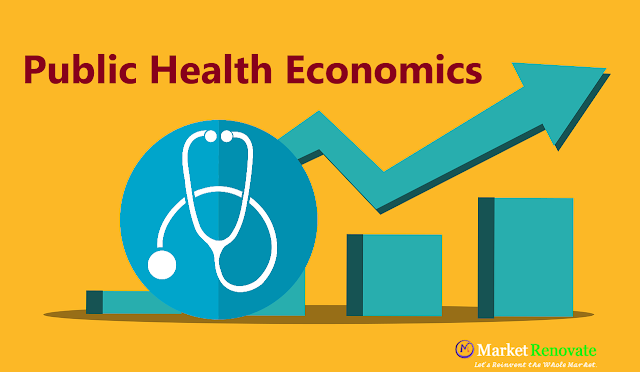Introduction to Public Health Economics
Public Health Economics is a branch of economics that focuses on understanding and analyzing the economic factors and principles that influence the health of populations and the delivery of healthcare services. It involves the application of economic theories, methods, and tools to examine the allocation of resources, the costs and benefits of healthcare interventions, and the overall impact of health policies and programs.
The primary goal of public health economics is to improve the health of a society while efficiently using limited resources to achieve the best possible health outcomes. It is concerned with the study of both individual and collective health behaviors and their impact on the well-being of communities.
According to Folland, Goodman, and Stano, “Public health economics is the application of the principles of economics to the broad issues of health and health care. It is concerned with understanding and influencing the behavior of individuals, organizations, and governments as they interact in the effort to provide health care and prevention of illness and injury.”
In the words of Michael Grossman, “Public health economics is the study of how social systems organize the production of health and health-related services, and the allocation and distribution of these services.”
According to David M. Cutler, “Public health economics involves understanding how to design and evaluate policies that improve the population’s health. It requires understanding human behavior, incentives, and the institutions that govern public health decisions.”
Health economics in relation to the three domains of public health
Health economics plays a pivotal role in shaping public health initiatives, with a focus on addressing key thematic areas, implementing core actions, and driving effective intervention strategies. This discourse examines the intersection between health economics and the three domains of public health: thematic, core actions, and intervention domains. By exploring economic principles within these domains, we can make proper decisions to promote population health, prevent diseases, and enhance overall well-being.
I. Thematic Domain:
Health economics contributes significantly to thematic areas within public health, including nutrition, environmental health, and the management of various diseases. The application of economic analyses in these domains enables the identification of cost-effective interventions and resource allocation strategies that maximize health outcomes.
- Nutrition: Health economists analyze the economic impact of dietary choices and their association with health outcomes. They assess the cost-effectiveness of nutritional interventions and dietary policies, helping to shape guidelines for healthy eating habits and public health campaigns.
- Environmental Health: Economic evaluations play a crucial role in quantifying the costs and benefits of environmental health interventions. This includes assessing the financial implications of pollution control, sanitation improvements, and occupational health measures, thus guiding policymakers towards sustainable and health-promoting solutions.
- Diseases: Health economics provides insights into the economic burden of diseases and the cost-effectiveness of medical treatments and prevention strategies. Through cost-benefit analyses, researchers can prioritize disease control measures and optimize resource utilization in healthcare systems.
II. Core Actions:
Public health economics is instrumental in guiding the implementation of core actions essential for improving population health. These actions encompass promoting health, preventing health risk factors and diseases, protecting health, controlling epidemics, and encouraging treatment and intervention.
- Promoting Health: Health economics assesses the cost-effectiveness of health promotion campaigns, such as smoking cessation programs, physical activity initiatives, and vaccination campaigns. It aids in determining the optimal allocation of resources to achieve the maximum impact on health promotion.
- Preventing Health Risk Factors and Diseases: Economists play a vital role in analyzing preventive measures, like screenings and early interventions, to mitigate health risk factors and curb the onset of diseases. This economic analysis informs decision-makers about cost-effective prevention strategies.
- Protecting Health and Controlling Epidemics: Health economics is employed to evaluate the economic consequences of public health interventions during epidemics and emergencies. This includes estimating the costs of disease surveillance, contact tracing, and other containment strategies.
- Encouraging Treatment and Intervention: Economic evaluations guide the allocation of resources to healthcare interventions, ensuring access to essential treatments and services. These evaluations also aid in assessing the cost-effectiveness of various healthcare programs.
III. Intervention Domain:
Health economics underpins the development and implementation of interventions in the public health domain. Various economic approaches, such as cost-effectiveness analysis and cost-utility analysis, suggest decision-making to achieve maximum health outcomes.
- Health Education: Health education interventions are focused on providing individuals and communities with information and knowledge about health-related topics. The goal is to increase awareness and understanding of health issues, risk factors, and healthy behaviors. Health education efforts often involve the dissemination of educational materials, workshops, and awareness campaigns.
- Health Promotion: Health promotion interventions go beyond education and aim to empower individuals to take control of their health by adopting healthy behaviors and lifestyles. These interventions encourage positive changes in behaviors, such as regular physical activity, healthy eating habits, and stress management. Health promotion often involves creating supportive environments that facilitate healthier choices.
- Legal Interventions: Legal interventions involve the implementation of laws, regulations, and policies to promote public health and protect the well-being of communities. Examples include tobacco control laws, seatbelt and helmet laws, and regulations related to food safety and sanitation. Legal interventions provide a framework for promoting healthy behaviors and reducing health risks through enforcement and compliance mechanisms.
- Infrastructural Interventions: Infrastructural interventions focus on improving the physical and social environments to support better health outcomes. This may include building and maintaining healthcare facilities, creating safe and accessible public spaces, enhancing public transportation options, and promoting healthy urban planning to encourage physical activity.
- Healthcare Interventions: Healthcare interventions encompass a wide range of medical treatments and preventive measures to manage health conditions and prevent diseases. These interventions include vaccinations, screenings, medical treatments, and early interventions for diseases. Economic evaluations play a crucial role in determining the cost-effectiveness of healthcare interventions.







Please leave your comments or ask your queries here. The comments shall be published only after the Admin approval.